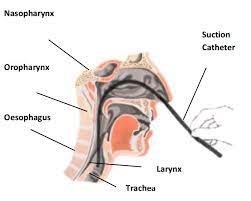A nurse is discussing risk factors for child abuse with members of a parenting group. The nurse should identify which of the following findings as a characteristic of perpetrators of child abuse?
Laissez-faire leadership style
Self-blame for financial problems
Rigid expectations of behavior
High self-esteem
The Correct Answer is C
Perpetrators of child abuse often exhibit rigid expectations of behavior, demanding strict adherence to rules and may have unrealistic or age-inappropriate expectations for their children. This can lead to increased stress and frustration, which may manifest in abusive behaviors.
Laissez-faire leadership style: A laissez-faire leadership style refers to a hands-off or
non-directive approach, where individuals allow others to make decisions and take control. While this leadership style may have its own implications, it is not specifically associated with child abuse.
Self-blame for financial problems: Self-blame for financial problems may indicate feelings of guilt or personal responsibility for economic difficulties. While financial stress can contribute to increased risk of child abuse, self-blame alone is not a characteristic specific to perpetrators of child abuse.
High self-esteem: High self-esteem refers to a positive self-regard and belief in one's abilities and worth. While low self-esteem can contribute to various psychological issues, including potential difficulties in parenting, high self-esteem is not a characteristic specifically associated with perpetrators of child abuse.
Nursing Test Bank
Naxlex Comprehensive Predictor Exams
Related Questions
Correct Answer is D
Explanation
Waiting 1 minute between suctioning attempts allows the client to recover and ensures that the procedure is not overly invasive. It also helps to prevent the client from becoming hypoxic.
The distance that the nasopharyngeal catheter should be inserted varies from person to person and therefore 10 cm is not standard.
During nasopharyngeal suctioning, the nurse should apply suction intermittently while withdrawing the catheter, not during insertion. Applying suction during insertion can cause tissue damage and increase the risk of trauma.
The nurse should also apply intermittent suction for no longer than 15 seconds to prevent hypoxia and damage to the mucosal lining. Suctioning for an extended period can cause discomfort and harm to the client.

Correct Answer is C
Explanation
During a seizure, the child's muscles may contract forcefully, which can lead to accidental biting of the tongue or inner cheek. Inspecting the child's mouth for any signs of injury, such as bleeding or lacerations, is important for assessing and addressing immediate needs.
Instead of placing the child in a supine position (flat on their back), it is recommended to position them on their side (recovery position) to help maintain an open airway and prevent aspiration in case of vomiting or secretions. This position also helps promote drainage of saliva or other fluids from the mouth.
Seizures can be frightening for both the child and their caregivers. Providing a calm and soothing environment, offering comfort, and reassuring the child and their family can help alleviate anxiety and promote a sense of safety.
Administering medication or offering fluids should be determined based on the healthcare provider's orders and individual circumstances. It is essential to consult with the healthcare team for specific instructions regarding medications and fluid management after a seizure episode.
Whether you are a student looking to ace your exams or a practicing nurse seeking to enhance your expertise , our nursing education contents will empower you with the confidence and competence to make a difference in the lives of patients and become a respected leader in the healthcare field.
Visit Naxlex, invest in your future and unlock endless possibilities with our unparalleled nursing education contents today
Report Wrong Answer on the Current Question
Do you disagree with the answer? If yes, what is your expected answer? Explain.
Kindly be descriptive with the issue you are facing.
